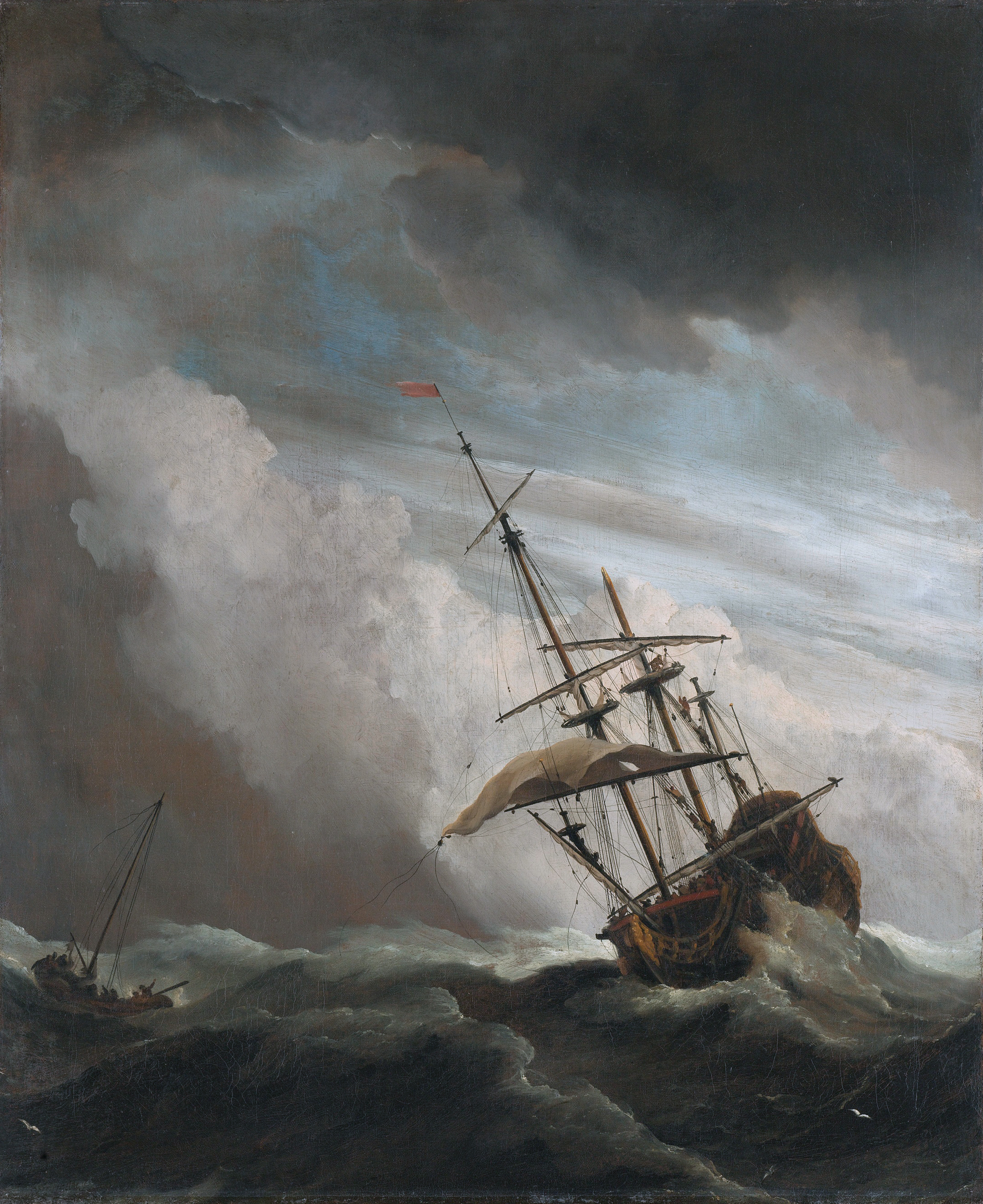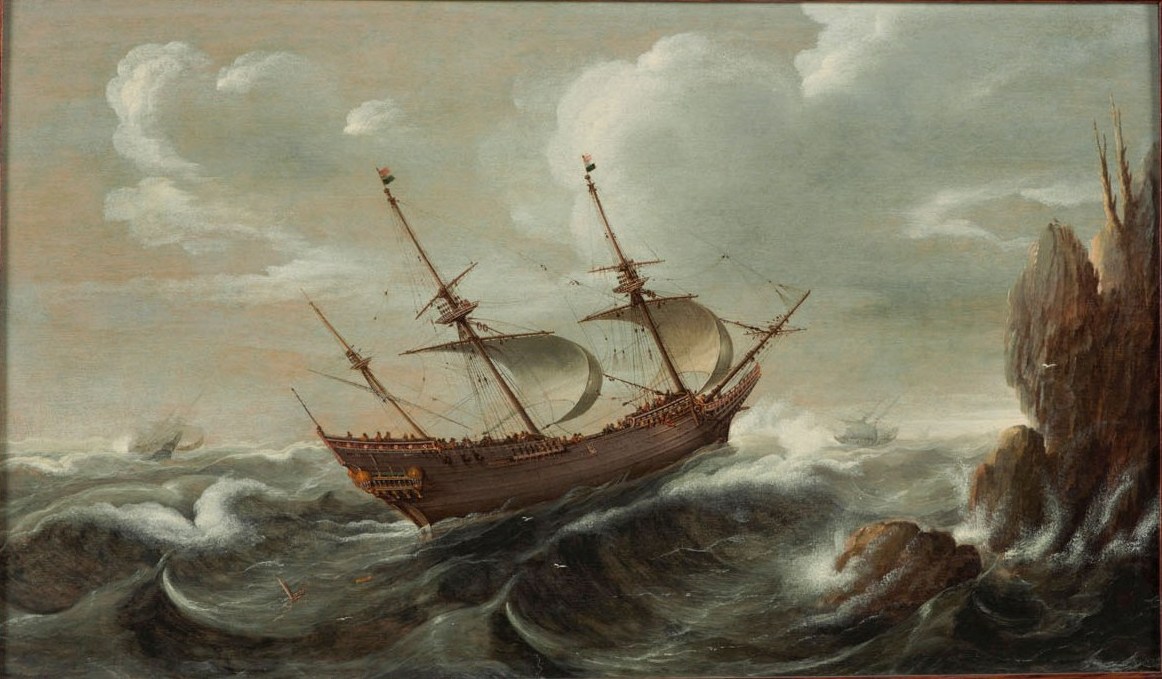
The Gust, Willem van de Velde II, 1680, Rycksmuseum, wikimedia commons
https://upload.wikimedia.org/wikipedia/commons/0/0c/De_Windstoot_-_A_sh…
This ship made several successful journeys to New Amsterdam in the 1640's but by the time it made its final trip in 1656-1657, Jacob Alrichs states that no member of the crew had seen that coastline..
Temporary Entry below, additional research in progress:
When the Dutch West India Company sent the ship, "de Prince Maurits, Prins Maurits or " to the new world in 1656, Gerritt van Swearingen was appointed as Super-Cargo of the vessel (an officer of a merchant ship whose duty is to manage the commercial concerns of the voyage). Jacob Alrichs, Marten Crieger, and Alexander d'Hinojossa , who would lead the colony, were also on board as The Prince Maurice sailed from the port of Amsterdam, Holland December 21, 1656, carrying 123 - 129 people and then went to Texel, where the final departure was on Christmas Day 1656. She was carrying gunpowder, tiles, and supplies to the Dutch colony of New Amstel, located on the Delaware River along with the immigrants.
The Prince Maurice may have been a 'fluyt' (flute), designed to provide maximum space for cargo and passengers and a smaller crew. These ships could carry twice the cargo of the ships commonly used at the time, and gave the Dutch a tremendous trading advantage. So it was indeed possible to pack in 123-129 people and the supplies necessary to sustain them on the 4 month voyage to New Amsterdam, as they'd planned.
These ships typically weighed 200–300 tons and were approximately 65-80 feet (24 metres) in length and was somewhat similar to the Spanish galleon.
The standard fluyt design minimized or completely eliminated its armaments to maximize available cargo space, and used block and tackle extensively to facilitate ship operations. Another advantage of its pear-shape (when viewed from the fore or aft) was a shallow draft which allowed the vessel to bring cargo in and out of ports and up and down rivers which other vessels could not reach.
Alternatively, the Prince Maurice may have been a Pinnace. These ships were commonly created by the Dutch as merchant ships, and had the square back end that is so commonly seen in 'Pirate Ships'. Built in a variety of sizes, a larger ship of this type would have easily carried 129 people and the cargo planned for this voyage.
On the night of March 8, 1657 the ship grounded off Fire Island, near the coast of Long Island (New York). The crew and passengers got to shore the next day. They were without fire for two days in freezing weather. On the third day friendly Indians who were employed as messengers by the Dutch West India Company came by and carried word to Governor Peter Stuyvesant at New Amsterdam. Stuyvesant arrived in a sloop, taking some passengers to New Amsterdam, where they remained several weeks. Part of the cargo was salvaged before the ship broke-up on the rocks. At New Amsterdam another ship, named "Beaver," was chartered, and those of the Prince Maurice sailed from there on April 16, 1657. They arrived at "South River" (Delaware River) settlement on April 21, 1657, where they landed and took possession of the Fort on April 25, 1657, and established the town of New Amstel (now called New Castle).

A Dutch Pinnace in Rough Seas, Cornelis Verbeeck, c. 1680 wikimedia commons.
An example of a Pinnace

